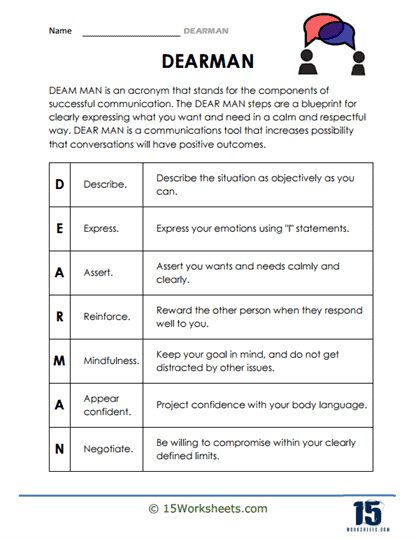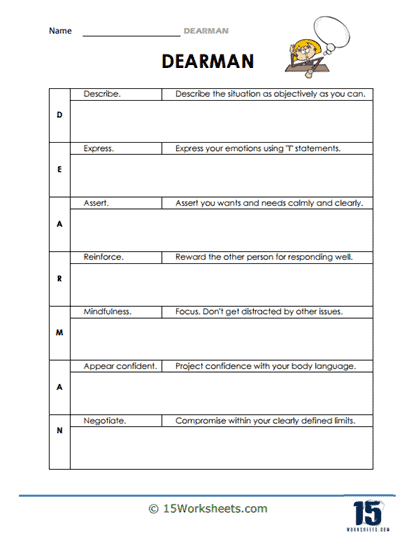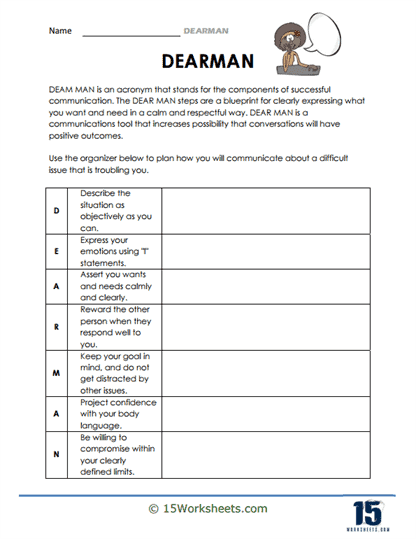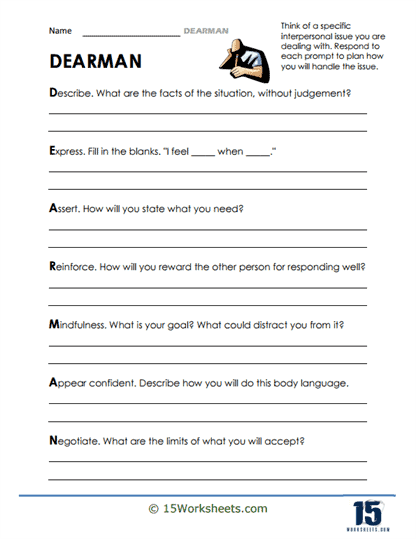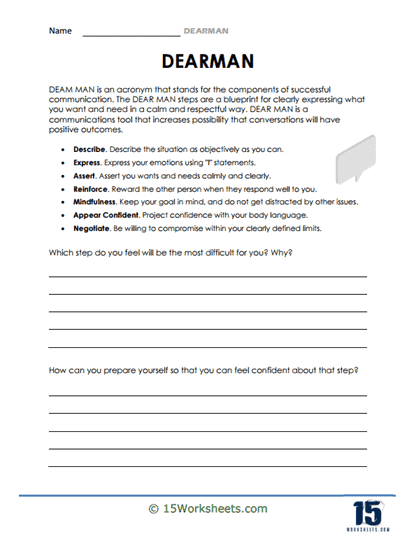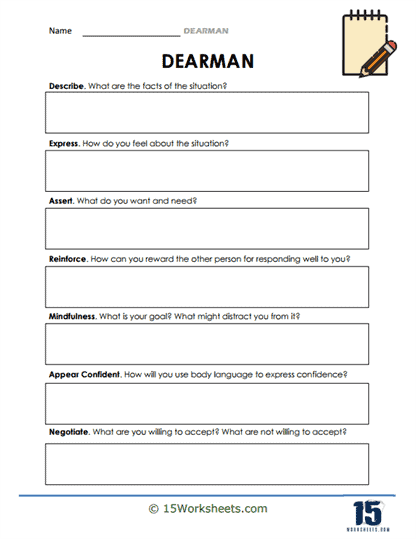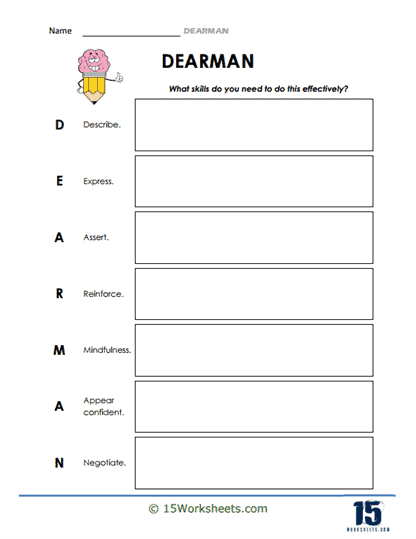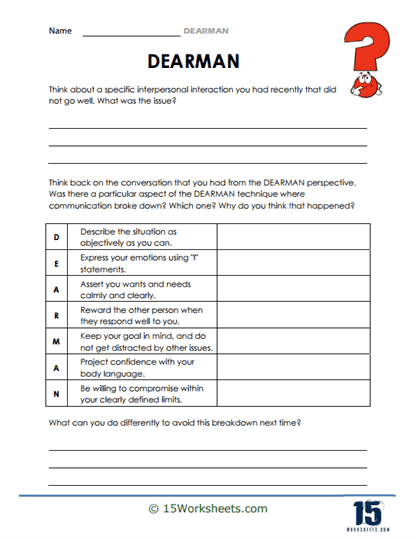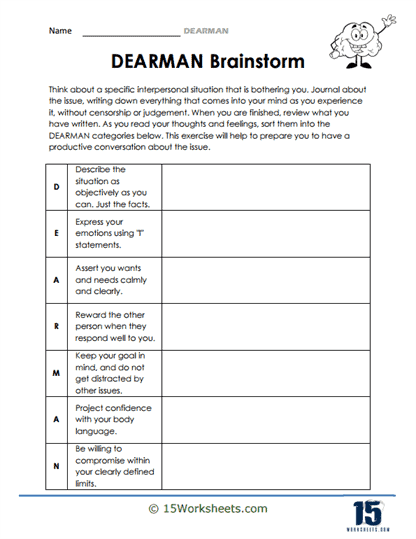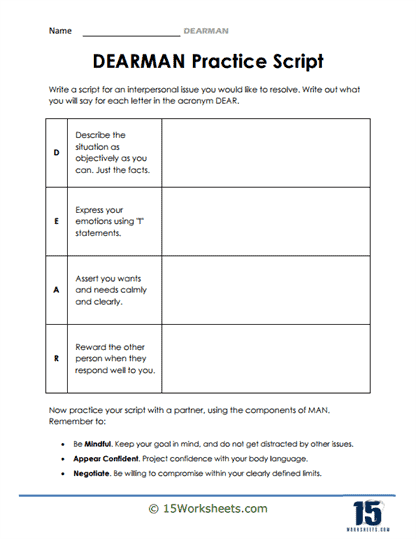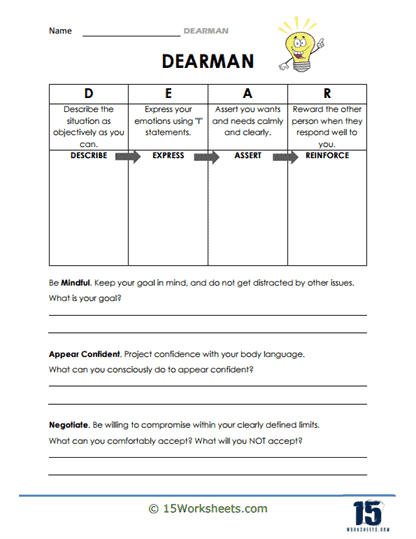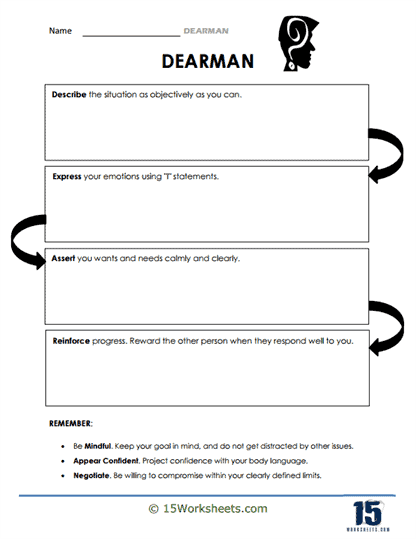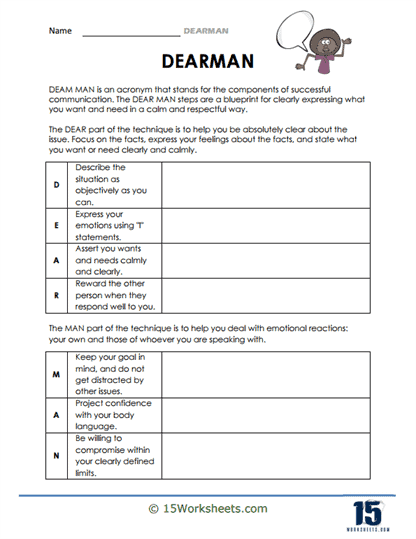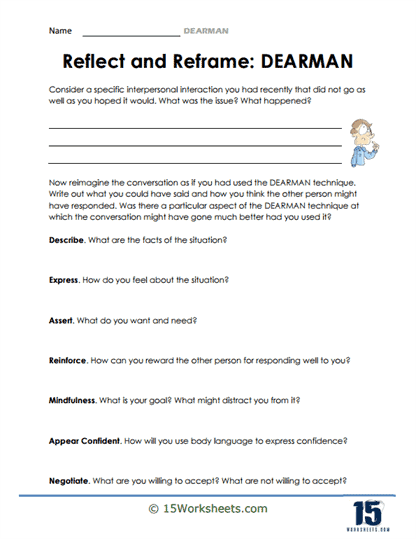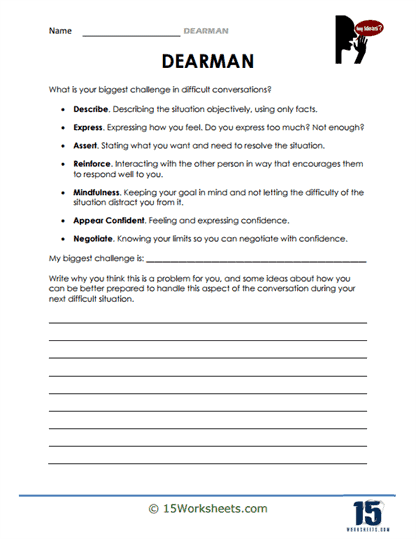DEARMAN Worksheets
All About These 15 Worksheets
DEARMAN is a powerful communication technique used to express needs, set boundaries, and navigate challenging interpersonal situations. This series of 15 worksheets has been thoughtfully designed to help students understand and practice the DEARMAN technique. Each worksheet focuses on different aspects of DEARMAN, providing guidance, examples, and exercises to enhance students’ communication skills and empower them to express themselves assertively and effectively.
The worksheets in this series cover various elements of the DEARMAN technique, including describing the situation, expressing emotions, asserting needs, reinforcing boundaries, and negotiating solutions. By engaging with these worksheets, students will develop the skills necessary to communicate their thoughts, feelings, and requests confidently, while maintaining respect for themselves and others. Through these worksheets, students will:
- Learn about the different components of DEARMAN and the benefits of assertive communication in interpersonal interactions;
- Practice describing a specific situation or issue using objective and non-judgmental language;
- Learn techniques for accurately and assertively communicating their feelings while using “I” statements and avoiding blame or judgment;
- Develop assertiveness skills and effectively communicate what they require from others;
- Learn strategies to set and communicate boundaries assertively, maintaining their self-respect and ensuring their needs are respected by others;
- Practice finding mutually beneficial solutions, considering different perspectives, and engaging in respectful compromise;
- And effectively apply the DEARMAN technique to real-life situations they have encountered or observed.
By engaging with these DEARMAN worksheets, students will develop valuable communication skills, enhance their assertiveness, and navigate interpersonal situations effectively. These practical exercises and reflections provide a foundation for them to express themselves confidently, advocate for their needs, and foster positive and respectful relationships with others. In summary, the DEARMAN technique equips students with a valuable tool for effective communication in various personal and professional contexts.
What Does DEARMAN Stand For?
DEARMAN is an acronym that stands for Describe, Express, Assert, Reinforce, (stay) Mindful, Appear confident, and Negotiate. It is a communication skill used in Dialectical Behavior Therapy (DBT) to teach individuals how to effectively assert themselves and maintain relationships while addressing conflicts or asking for something they need or want. Here’s a breakdown of the components:
Describe
Clearly and factually describe the situation, focusing on what you observed and the context in which it occurred. Avoid using judgmental language or making assumptions.
Express
Share your feelings and emotions about the situation, using “I” statements to communicate your perspective without blaming or accusing the other person.
Assert
Clearly state your needs, wants, or boundaries. Be direct and specific about what you are requesting or what you would like to see changed.
Reinforce
Explain the positive outcomes that would result from the other person meeting your request or addressing the issue. This helps to create a sense of motivation and incentive for the other person to respond positively.
(stay) Mindful
Stay focused on the present moment and avoid being distracted or deterred by irrelevant topics or emotions. If the conversation starts to veer off course, gently bring it back to the issue at hand.
Appear Confident
Maintain a confident and assertive demeanor throughout the conversation, using appropriate body language, tone of voice, and eye contact to convey your message effectively.
Negotiate
Be open to finding a compromise or collaborating on a solution that meets both parties’ needs. Acknowledge the other person’s perspective and work together to reach a mutually satisfactory resolution.
By following the DEARMAN approach, individuals can communicate assertively and effectively, helping them navigate difficult conversations and maintain healthy relationships.

